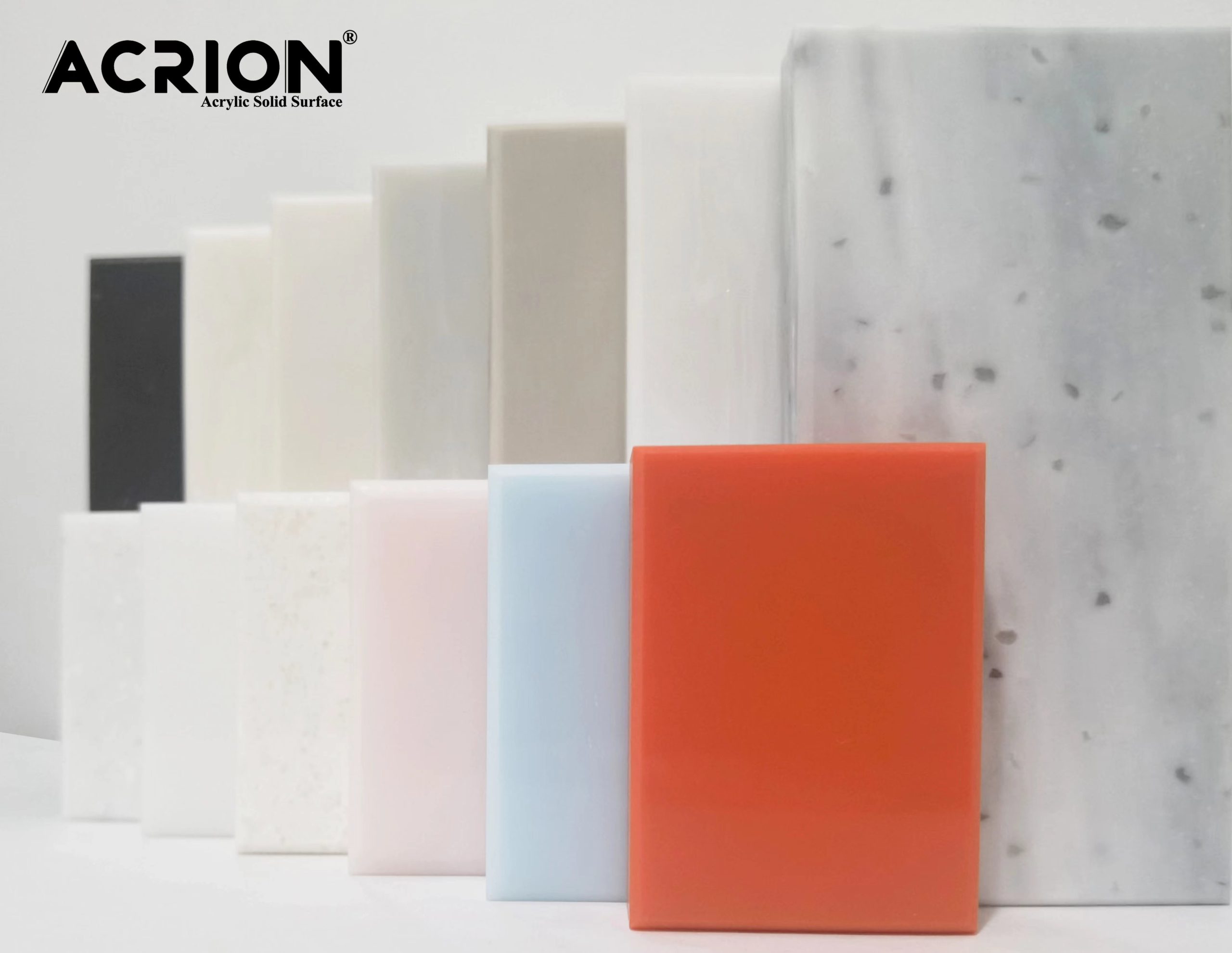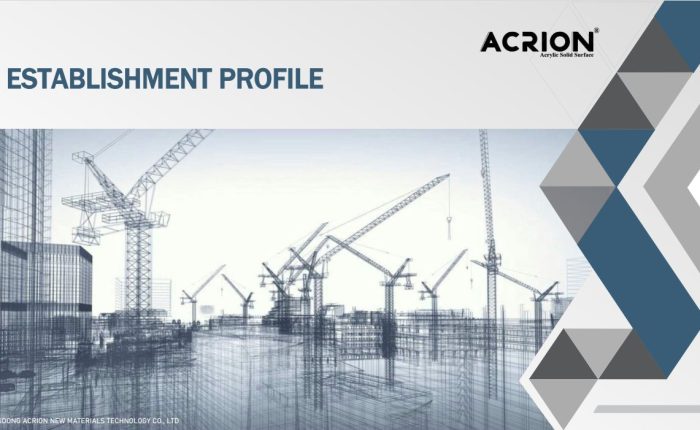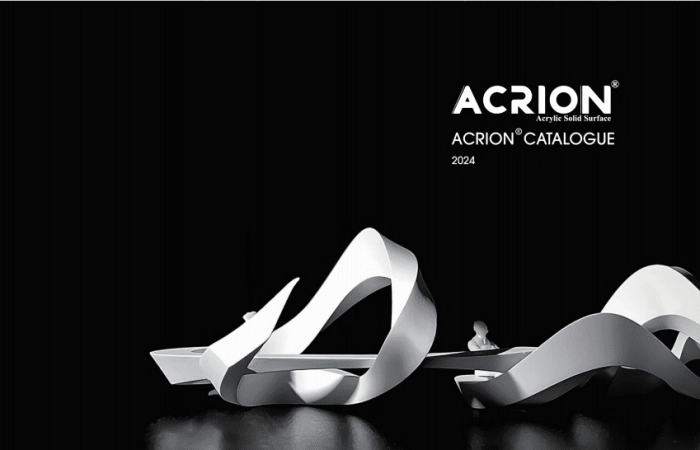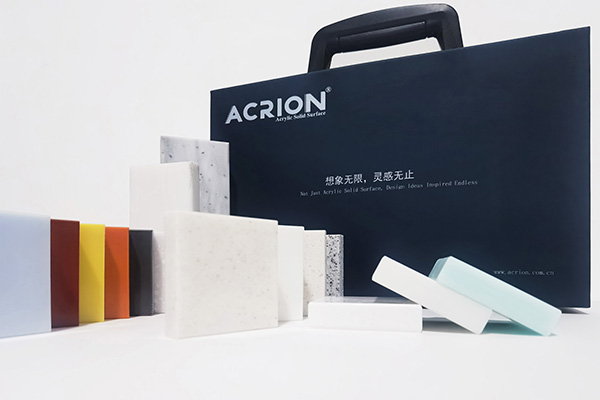Анализ гибкости и пластичности акриловых твердых поверхностей
На гибкость и пластичность твердой поверхности акриловой кислоты влияют молекулярная структура смолы, механизм отверждения и внешние условия. Следующий анализ проводится по трем направлениям: свойства материала, влияющие факторы и сценарии применения:
Во-первых, источники и проявления гибкости.
Гибкость молекулярной цепи
Гибкость акриловой смолы в основном зависит от структуры сложноэфирной группы (-COO-) и алкильной группы (-R) в основной цепи. Например, введение длинноцепочечных алкильных групп (таких как C8-C12) может увеличить свободный объем молекулярной цепи, снизить температуру стеклования (Tg) и тем самым повысить гибкость. Если в основную цепь ввести гибкие мономеры (например, бутилакрилат), покрытие выдержит изгиб на 180° при комнатной температуре без растрескивания. Однако когда доля твердых мономеров (таких как метилметакрилат) слишком высока, хрупкость покрытия значительно возрастает.
Влияние плотности сшивки
Дозировка сшивающих агентов (таких как диизоцианаты и эпоксидные смолы) напрямую влияет на гибкость. Например, если плотность сшивки слишком высока, покрытие может разрушиться из-за концентрации напряжений во время испытания на изгиб. Умеренное сшивание (например, степень сшивания 30-50%) может сбалансировать твердость и гибкость, позволяя покрытию сохранять определенную твердость, сохраняя при этом ударопрочность.
Температурная зависимость
Гибкость акрилового покрытия увеличивается с повышением температуры. Например, при -20 ℃ покрытие может хрупко сломаться; При 60℃ его удлинение при разрыве может увеличиться в 2–3 раза. Эта характеристика требует, чтобы при использовании в условиях низких температур формула была оптимизирована (например, добавление пластификаторов) для сохранения гибкости.
Во-вторых, механизм реализации пластичности.
Переработка термопластов
Не полностью отвержденная акриловая смола может достичь пластичности за счет обработки термопластов. Например, при температуре 120–150 ℃ смолу можно каландрировать, формовать с раздувом или литьем под давлением, и она сохраняет свою форму после охлаждения. Эта характеристика применима к производству изделий сложной формы (например, декоративных деталей неправильной формы), но необходимо контролировать температуру обработки, чтобы избежать термического разложения.
Формование с помощью растворителя
Вязкость смолы можно снизить, а ее пластичность повысить путем добавления летучих растворителей (например, этилацетата). Например, когда содержание растворителя составляет 20-30%, смолу можно наносить или распылять тонким слоем, а после испарения растворителя образуется плотное покрытие. Этот метод применим для крупномасштабного строительства (например, наружных стен зданий), но необходимо обратить внимание на влияние скорости испарения растворителя на ровность покрытия.
Светоотверждение и обратимое сшивание
Некоторые акриловые смолы можно фотоотверждать фотоинициаторами, при этом для повышения пластичности вводятся обратимые сшивающие связи (такие как дисульфидные связи и водородные связи). Например, под воздействием ультрафиолетового излучения смола может отверждаться и формоваться за считанные секунды. Под воздействием нагрева или специфических растворителей сшивающие связи могут разрываться, приводя к вторичной форме. Эта функция применима к сценариям, требующим повторяющейся обработки (например, 3D-печати).
В-третьих, ключевые факторы, влияющие на гибкость и пластичность.
Состав мономеров смолы
Соотношение мягких мономеров (таких как этилакрилат и изооктилакрилат) и жестких мономеров (таких как метилметакрилат и стирол) напрямую влияет на гибкость. Например, когда доля мягких мономеров превышает 60%, гибкость покрытия значительно улучшается, но твердость может быть недостаточной. Когда доля твердых мономеров слишком высока, покрытие склонно к растрескиванию.
Пластификаторы и модификаторы
Пластификаторы (такие как диоктилфталат) могут уменьшить межмолекулярные силы и повысить гибкость. Например, добавление 5-10 % пластификатора позволяет увеличить удлинение покрытия при разрыве более чем на 50 %, но может снизить его термостойкость и химическую стойкость. Кроме того, введение нанонаполнителей (таких как кремнезем и углеродные нанотрубки) может повысить гибкость и прочность за счет физического сшивания.
Условия отверждения
Температура и время отверждения оказывают существенное влияние на гибкость и пластичность. Например, низкотемпературное отверждение (например, 40 ℃) может привести к неполному сшиванию, в результате чего образуется покрытие с хорошей гибкостью, но недостаточной твердостью. Высокотемпературное отверждение (например, 120 ℃) может ускорить реакцию сшивки, повысить твердость, но может снизить гибкость. Кроме того, гибкостью УФ-отверждаемого покрытия можно управлять, регулируя концентрацию фотоинициатора и интенсивность света.
В-четвертых, требования к гибкости и пластичности сценариев применения.
Архитектурное покрытие
Покрытия наружных стен должны иметь определенную степень гибкости, чтобы противостоять тепловому расширению и сжатию, вызванным изменениями температуры. Например, в районах с большой разницей температур днем и ночью покрытие должно иметь удлинение при разрыве 10-15%, чтобы предотвратить растрескивание. Кроме того, пластичность требует, чтобы покрытие могло равномерно покрывать поверхность сложных оснований (например, кирпичных стен и камня).
Автомобильное покрытие
Такие компоненты, как автомобильные бамперы, должны быть одновременно гибкими и податливыми. Например, покрытие должно сохранять гибкость в диапазоне от -40℃ до 80℃ и в то же время быть способным выдерживать незначительные удары, не отслаиваясь. Кроме того, пластичность требует, чтобы покрытие могло адаптироваться к процессу литья под давлением и образовывать гладкую поверхность.
материалы для 3D-печати
Акриловая смола, отверждаемая ультрафиолетом, должна быть податливой для печати сложных структур. Например, смола должна быстро отверждаться под воздействием ультрафиолета, сохраняя при этом определенную степень гибкости, чтобы предотвратить поломку в процессе печати. Кроме того, печатная продукция должна иметь достаточную прочность, чтобы выдерживать эксплуатационные нагрузки.
В-пятых, стратегии повышения гибкости и пластичности.
Молекулярный дизайн
Гибкие сегменты вводятся путем сополимеризации или прививки. Например, введение сегментов полиэфира (таких как метакрилат полиэтиленгликоля) в акриловую смолу может значительно повысить гибкость, сохраняя при этом водостойкость.
Композитная модификация
Смешайте акриловую смолу с эластомерами (такими как нитриловый каучук, полиуретан). Например, добавление 10–20 % эластомера позволяет увеличить ударную вязкость покрытия в 3–5 раз при сохранении прозрачности.
Процесс после лечения
Оптимизируйте структуру покрытия путем термообработки или отжига в растворителе. Например, термообработка при температуре 100 ℃ в течение 2 часов может снять внутреннее напряжение покрытия и повысить его гибкость. Отжиг в растворителе может способствовать перестройке молекулярных цепей и повышению пластичности.



